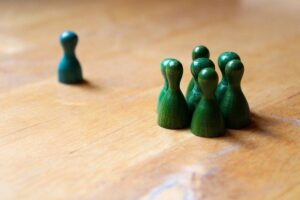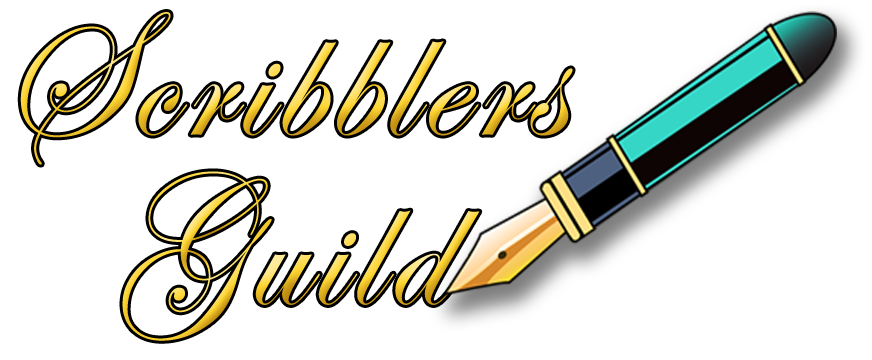Lying to Yourself — Self-Integrity 101
“This above all: to thine own self be true,
And it must follow, as the night the day,
Thou canst not then be false to any man.”
— William Shakespeare, “Hamlet”
Self-integrity

What does it mean?
Is it the meaning of the Shakespeare quote above, or does it mean something more, something deeper?
Perhaps it’s our conscience, speaking to us in the “still, small voice” about right and wrong. Perhaps it’s our core values telling us about our most profound self-identity. Or perhaps it’s a limiting belief, attempting to keep us safe in trying times or confusing circumstances.
Or maybe it’s a lot simpler than any of those. Maybe it’s merely our subconscious reminding us when we’re lying to ourselves. A prompt prodding us when we’re being dishonest, when we undervalue our own skills and abilities and tell ourselves that somehow our lives, our contributions hold less worth than others’.
Wait… what?
How often have you said to yourself, “Oh, it’s good enough. It’s just for me,” when you know deep down, if it were for other people, you’d make more of an effort? Do you let your house get a little untidy when it’s just you, but you go through a cleaning frenzy when you know guests are arriving?
Or perhaps you promise yourself you’ll take the dog for a nice long walk so you can both get some much-needed exercise, but it’s raining, so you just let her out in the backyard.
Those are both examples of being out of integrity with yourself.
Self-integrity means not lying to yourself. It means fulfilling the promises you made, not just to other people but to yourself as well.

Most of us tend to be more accountable to others than we are to ourselves. It’s human nature. We want others to like, value and respect us, so we put ourselves out for them. This behaviour helps to ensure our status and safety within the tribe and the larger society. Those who don’t fit in can be exiled, which could be fatal.
We can use this accountability to others to make sure we do the right thing — finish that project, write that book, whatever the promise is that we’ve made to other people. And yes, this is a valid and useful way to achieve our goals, by making promises to others.
But how much more effective we could be if we kept our promises to ourselves! Self-integrity is about doing the right thing when nobody’s watching. It’s all about being our own monitor.
And most of us fall down badly on that job. We let ourselves get away with behaviour we’d condemn in others. And why do we do that? It comes down to our self-identity and the internal battle between our core values and our limiting beliefs.
Self-identity
Personal identity is the sum total of who we are, and it’s how others see us.

Self-identity is how we identify and define ourselves. It’s the way we view our role in the world and it’s dependent on what we value, what’s important to us. We want to think of ourselves as the hero of our own story.
So, because we so closely identify with certain aspects of our personality, we tend to discount or ignore other aspects which are equally true, though perhaps not as desirable. We have blind spots about these other parts of ourselves — our limiting beliefs. Self-identity refers to prominent and, largely unchanging aspects of our self-perception. It’s how we think of and refer to ourselves.
For example: I am creative, a writer, an artist. I’m a non-smoker. I’m a kind person. I love animals. I love tea. I am intelligent. I question authority, I am a loner, a woman, a gardener, a writer, and “a lady of a certain age”. I have a sense of humour and I’m empathetic. I like and admire these qualities in other people.
Someone else might say about themselves: I am a husband, a wife, a mechanic, a construction worker, a conservative, adventurous, a family man, a mother, gay, open-minded, or a cancer survivor. They might think of themselves as serious, a comedian, meticulous, a worrier or carefree.
Often our self-identity is tied to our social connections: our jobs, hobbies, nationalities, family ties, religious beliefs and group affiliations.
Core Values

But the core of our self-identity is our morals and values, and these are the lessons we’ve learned, the conclusions we’ve reached, the skills and talents we’ve developed and the stories we’ve told ourselves over the course of our lifetime. They form the basis of everything we consider to be important to us. Our core values are our lines in the sand, the buck stops here, the things we’ll kill or die for, and are not prepared to compromise.
The absolute descriptions we give ourselves, the “I am” descriptions, are based on these core identities. They answer questions like “Who am I?” ”Why am I here?” “What is my purpose in life?” Part of their purpose is to define ourselves as different from everyone else.
Core identities in adults can be very difficult to change. Altering them often requires a completely different point of view and a compelling reason or necessity for us to make the change. We would need to see the world very differently for that change to take place.
Similarly, our limiting beliefs can masquerade as core values, because our belief in them is absolute. It takes an enormous emotional impact for us to change these views and opinions.
Simply put, personal identity is who we are in total, while self-identity is who we see or define ourselves to be.
Where we run into trouble, (and incidentally where our written characters run into trouble) is at the centre of the conflict between our core values, which tend to be how we think of our “best selves” as the heroes of our own stories, and our limiting beliefs which prevent us from taking the necessary actions which ensure that we are, or can become, those heroes. This is the place where our (or our characters’) inner conflicts converge.
And often, it takes another person’s feedback to show us where those conflicts are.
Out of Self-Integrity
So how do we know when we’re out of self-integrity?
First of all, let’s not beat ourselves up about it. We all do it.
We can resolve to listen to our inner voice and question our beliefs, even the ones which seem like ultimate truths. Question everything. Measure against the values of others. Maybe their values are equally true, even though they conflict with our own.
 There are a number of ways to spot when we’re out of integrity with ourselves. Most of them are quite subtle and take a bit of practice to notice them. Some of them are overt, but because they’re uncomfortable or unpleasant, we avoid them — those are our limiting beliefs, the “truths” we take for granted, but are unwilling to examine or challenge. We need to learn to listen to our conscience, our own “still, small voice”. We need to learn to admit when we’re wrong, when we’re no longer in integrity with the promises we’ve made to ourselves. We need to recognize the signs that tell us we’re breaking those promises — recognize the trigger words that signal to us we’re being dishonest with ourselves, when we let things slide or avoid conflict or confrontations, or behave in ways that cause harm to ourselves and others.
There are a number of ways to spot when we’re out of integrity with ourselves. Most of them are quite subtle and take a bit of practice to notice them. Some of them are overt, but because they’re uncomfortable or unpleasant, we avoid them — those are our limiting beliefs, the “truths” we take for granted, but are unwilling to examine or challenge. We need to learn to listen to our conscience, our own “still, small voice”. We need to learn to admit when we’re wrong, when we’re no longer in integrity with the promises we’ve made to ourselves. We need to recognize the signs that tell us we’re breaking those promises — recognize the trigger words that signal to us we’re being dishonest with ourselves, when we let things slide or avoid conflict or confrontations, or behave in ways that cause harm to ourselves and others.
And above all, we need to learn a new habit — one of acting on those moments of recognition. Change our behaviours, so that we keep those promises to ourselves. Not just once or twice, but over and over and over again, until it becomes a new reality, and a new core value.
How to Fix It
This is a lifelong transformation, so it’s not going to fix itself overnight, but like the pearl in the oyster, repetition will create a gem of a habit over time.
- Notice when you’re “letting things slide” — dishes, lawn cutting, procrastination with your writing, even gossiping or making an unkind comment disguised as humour. It’s the little things that are easiest to fix. Pick one thing and resolve to make sure it’s done. Every… Single… Time. Repeat until it’s habitual. Then pick another. It helps to find one that somehow relates to or goes with the first habit. This is known as “habit stacking” and makes it easier to build a collection of habits that work together. For more on habit stacking, I highly recommend James Clear’s book, “Atomic Habits”.
- Ask a trusted friend to tell you one bad habit or negative behaviour they’d change about you. This is going to hurt, and you’ll probably react with anger and defensiveness. Warn your friend ahead of time that this might be your reaction, so that they’re prepared for it. We are emotionally triggered by those who challenge our limiting beliefs because it means we were wrong, and nobody likes to be wrong. But more often than not, if they honestly care for you and want to help you, when you look at their criticism honestly, you’ll see they were right. Instead of automatically excusing or justifying your position, reexamine it in light of their feedback. In their comments, look for the truth that triggered your emotional reaction. Often others see us more clearly than we see ourselves. This process also works if you overhear someone saying something unkind about you. Question why you’re emotional and evaluate their comment honestly. Use your emotional reaction as a clue to question whether your belief is actually true.
- Look at the behaviours and habits of other people and notice what it is about them that annoys you, infuriates you or disappoints you. More often than not, you’ll find that there’s something they’re doing that triggers a hidden or ignored behaviour of your own that needs to be addressed. These “hidden” behaviours are the ones that are most painful to acknowledge because we really don’t want to admit that we’re flawed human beings and not the hero we try to show to others. Usually, when someone ticks us off, it’s because of a behaviour of our own that we can’t see or acknowledge.
This can be painful work, but it’s well worth the effort, because, like Shakespeare’s quote above, when we’re in integrity with ourselves, when we’re honest with ourselves, we can then be honest in our dealings with everyone else.
Beverley Hanna
Trained as an artist in the late 1960’s and early 1970’s, I was one of the first creatives to be employed in the computer graphics industry in Toronto during the early 1980’s. For several years, I exhibited my animal portraiture in Canada and the U.S. but when my parents needed care, I began writing as a way to stay close to them. I’ve been writing ever since. I run a highly successful local writer’s circle, teaching the craft and techniques of good writing. Many of my students have gone on to publish works of their own. I create courses aimed at seniors who wish to write memoirs, with a focus on the psychology of creatives and the alleviation of procrastination and writer's block.
